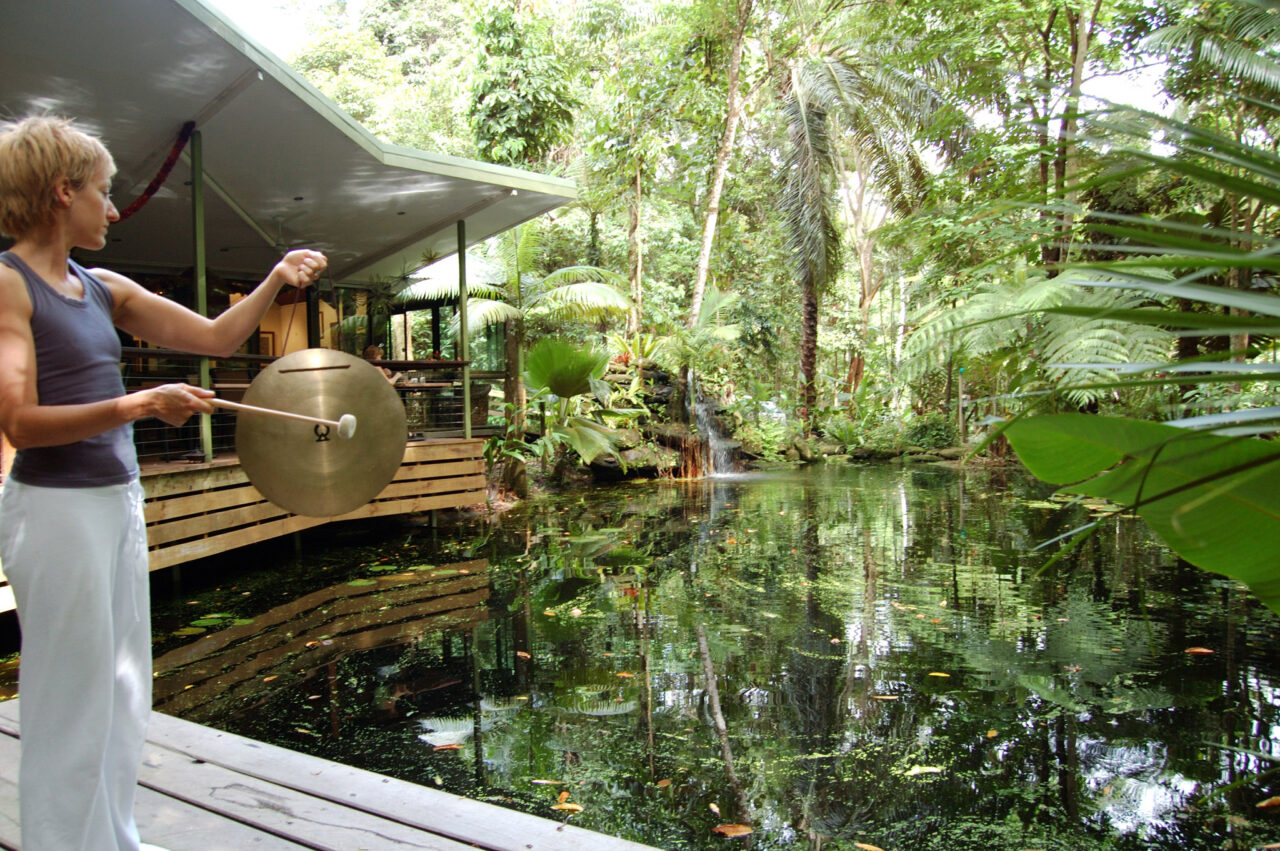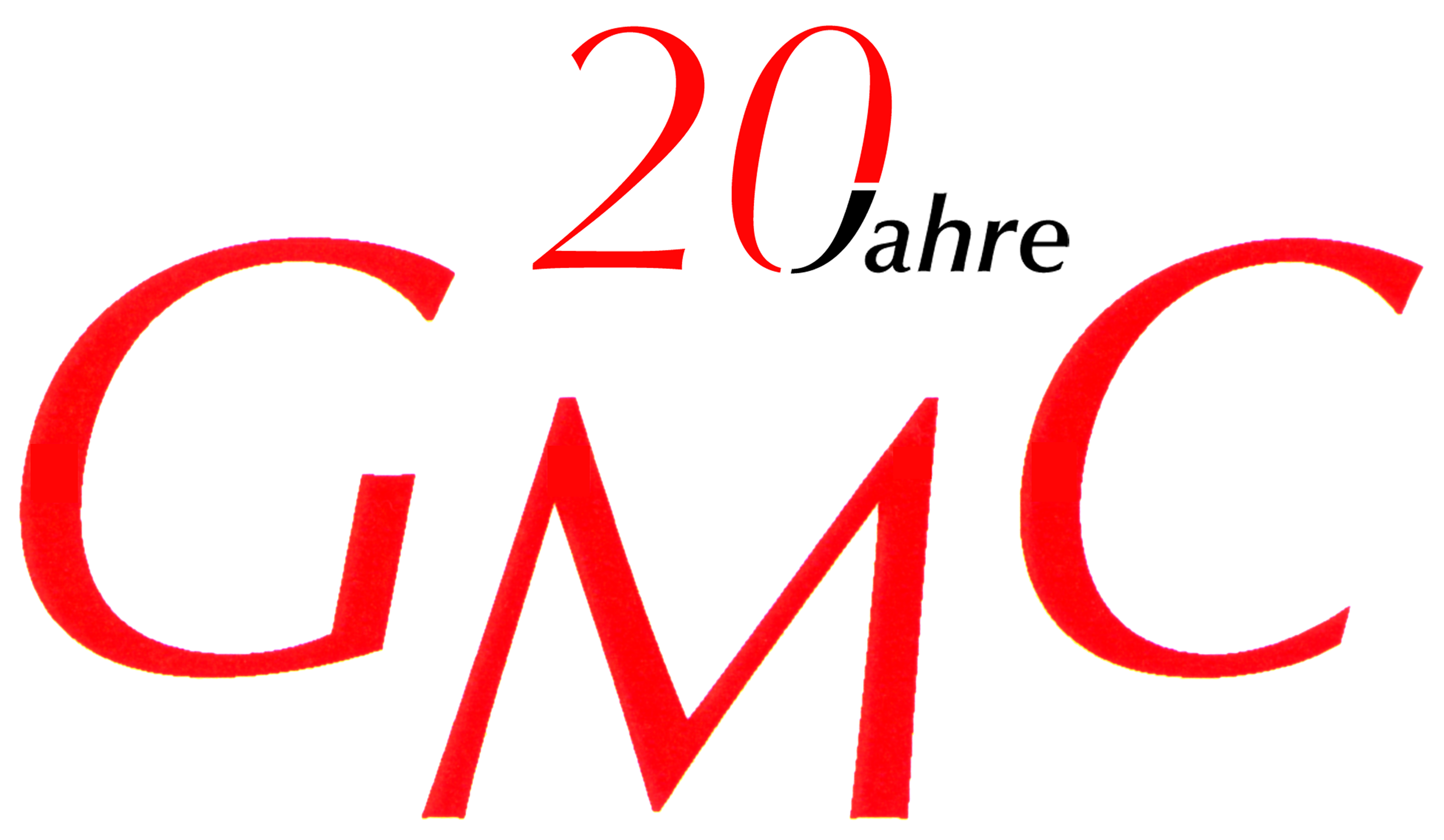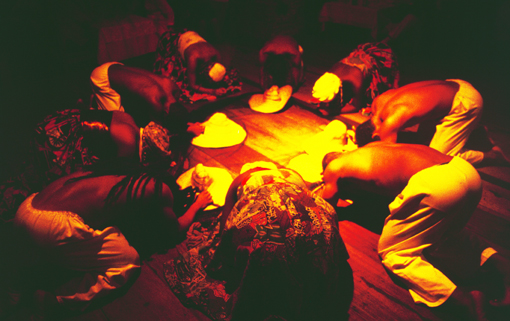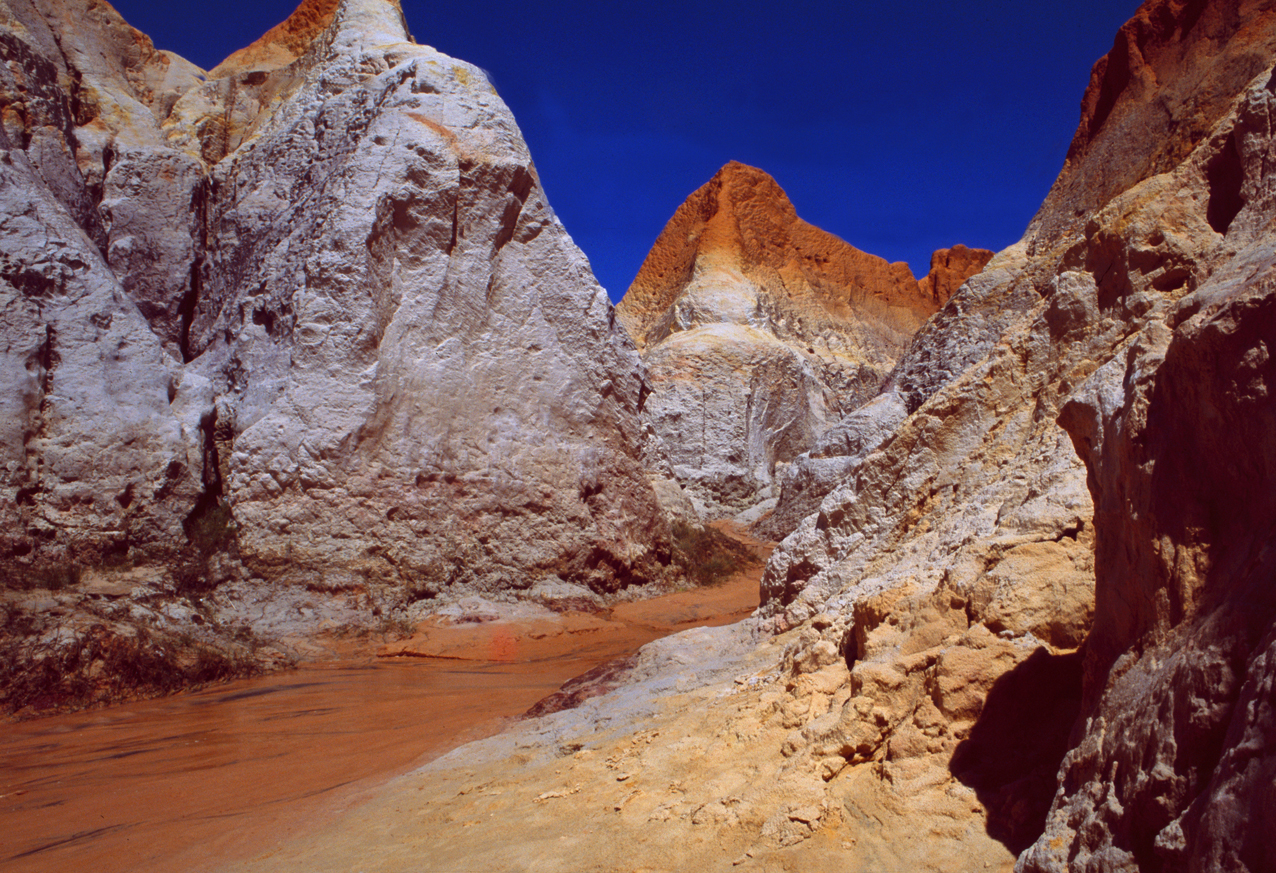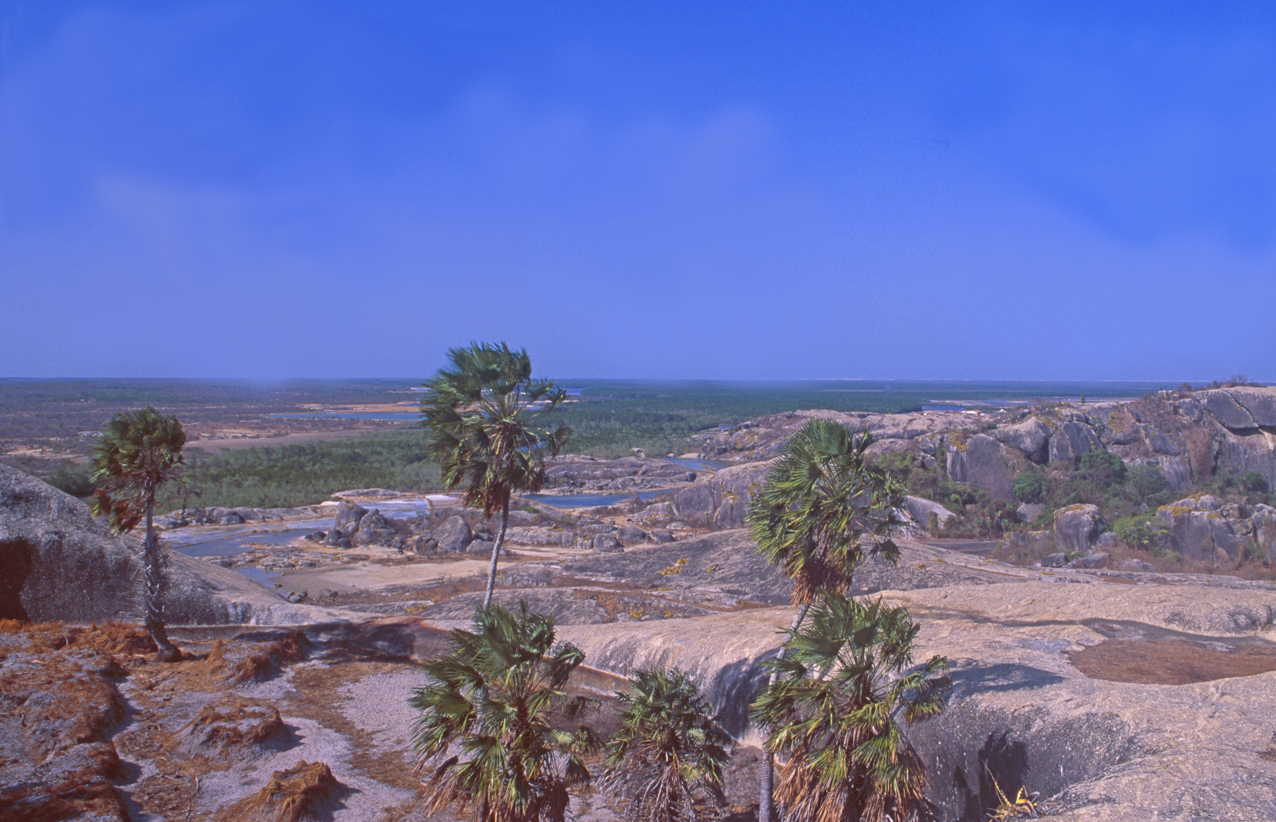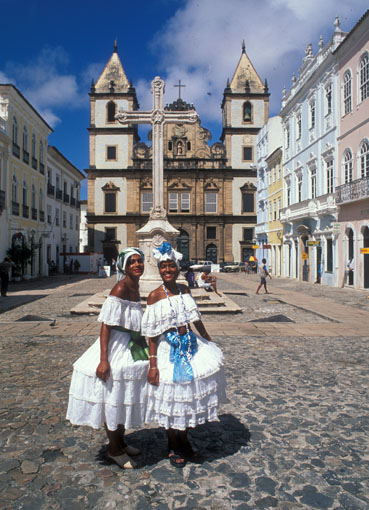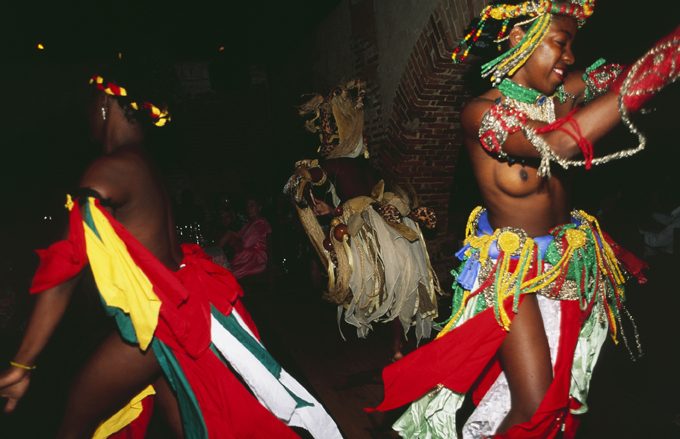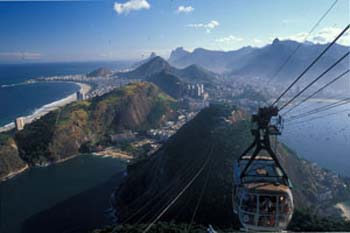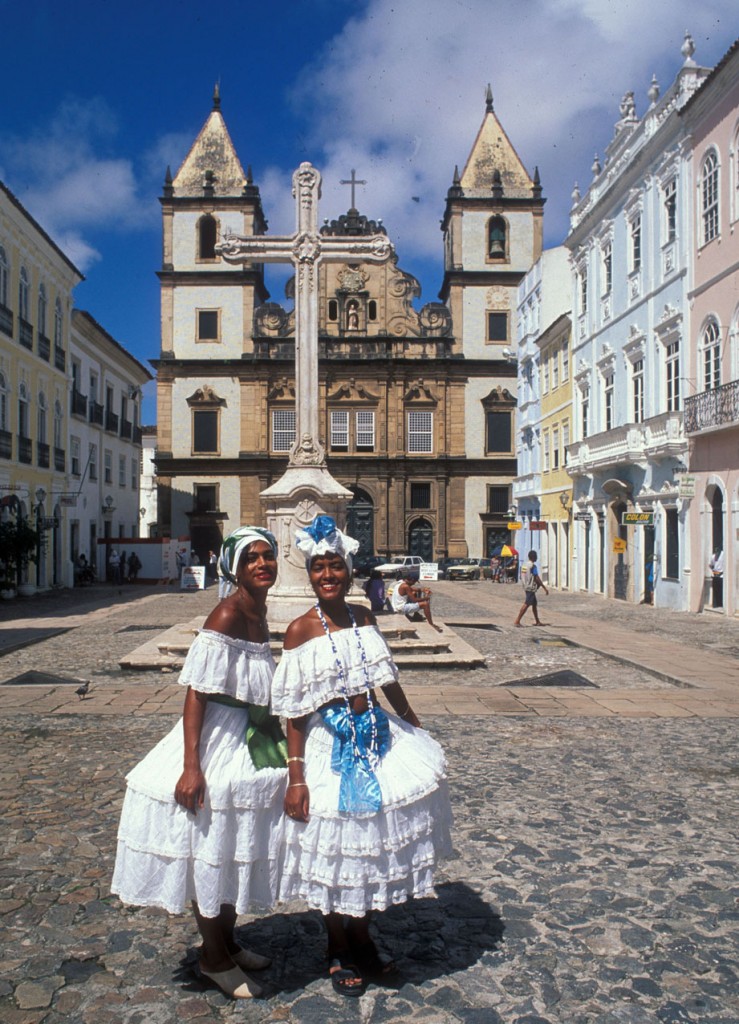FOREWORD
The author, Gerd Michael Müller, born in Zürich in 1962, traveled as a photo-journalist to more than 50 nations and lived in seven countries, including in the underground in South Africa during apartheid. In the 80 years he was a political activist at the youth riots in Zürich. Then he was involved in pioneering Wildlife & eco projects in Southern Africa and humanitarian projects elsewhere in the world. As early as 1993, Müller reported on the global climate change and in 1999 he founded the «Tourism & Environment Forum Switzerland». Through his humanitarian missions he got to know Nelson Mandela, the Dalai Lama and other figures of light. His book is an exciting mixture of political thriller, crazy social stories and travel reports – the highlights of his adventurous, wild nomadic life for reportage photography .
(please note that translation corrections are still in progress and images will follow soon)
1. „Turbulent Times: The 80s youth riots
The journey around the globe to various trouble spots and cultural highlights starts in my hometown Zurich. Already employed at the age of 18, a tsunami was rolling towards the conservative bourgeoisie and the political class. 1980 was the year that was to shake up the staid society in Switzerland and plow it up in the course of the 80s. In May of that year, the „Opera House Riots“ began as a prelude to the subsequent „Zurich Youth Riots.“ This was triggered by the latent dissatisfaction of young people with the facilities and free spaces available to them. This manifested itself most conspicuously in the upcoming vote on a city subsidy of 60 million francs for the opera house and, in return, no 10,000 francs for the „Rote Fabrik,“ at that time the only youth cultural center in the city of Zurich. At that time, there was still a curfew for everyone at midnight, and half an hour later everyone had to be dutifully at home. Recreational fun and other cultural offerings were kept within narrow limits. There were no free spaces for pubescent youths at all, only one or two leisure centers that focused mainly on sports.
Three short phrases were formative in my youth: „You can’t do that!“ „You can’t!“ And, „You can’t!“. This was pure motivation for us to revolutionize along the lines of, „Well, of course you can!“ If you were one jag off the track, i.e. away from the bourgeois norm of morality and order, you were treated like a leper. Radio and TV were dead in those days. In Switzerland and throughout Europe, the 70s seemed gray and dreary in every respect; the population remained in its conservative corset. There was no nightlife, Internet or streaming. Good music or movies were rare until video stores came along and the „Walkmen“ changed the music world. But cell phones, labtops, PCs, social media and the like didn’t exist yet. No wonder that the youth scene had been seething for some time, and suddenly the powder keg that was to shake society not only in Switzerland but throughout Europe was unleashed. After the 68ers came the next anarchist youth revolt.
This gloom was a consequence of the oil crisis, the „Cold War“, the Wall and the threat of the communist regimes, the Vietnam War, which became more and more brutal and grotesque. First the blanket napalm bombings on Vietnamese civilians with the gruesome images of burning people and children, then the „Agent Orange“ defoliation operations and all the mutilated dead, and the inhumane prison camps. („That was just horrible and senseless“). There were hearts, souls and minds crying out for justice, if not retribution! What was inexplicable about this war of extermination was that for decades it was not sanctioned by the U.S. Congress, but was financed solely by the „CIA“ and it paid for the war costs by having U.S. troops in the Golden Triangle load tons of the opium into the empty bomber planes and then bring it to Mexico where the opium was processed into heroin. Thus, America brought the flood of heroin to its own doorstep and gave the Mexicans their drug labs and cartels.
In this Kafkaesque operation, the „CIA“ definitely lost the „I“, i.e. the „intelligence“, or one could put it differently and call the „CIA“ the „Criminal Intelligence Agency“. In addition to the „Cold War“ there was the nuclear threat in the „Cold War“ and not least the danger from the nuclear reactors themselves. Switzerland also wanted to become a nuclear power at that time and in the course of this insane intention, a reactor accident occurred in Switzerland in Lucens in the canton of Vaud in January 1969. Then came the reactor accident in Chernobyl, which to this day pollutes the vegetables in Ticino and elsewhere in Europe. Later, the Tinner brothers once again proved in a scandalous way that Swiss „nuclear know-how“ can also be exported, for example to Pakistan.
Already Peter Regli, a Swiss intelligence officer, cooperated with the apartheid regime in the ABC weapons program. So opportunistic Switzerland has not only exported its political short-sightedness, but also supplied South Africa and Pakistan with nuclear know-how and uranium. But back to Zurich to the explosive situation here in the run-up to the vote for the „Opera House Credit“. At the annual „Allmendfest“ over Whitsun with the first open air concerts, flyers for a demo were distributed and youth centers were demanded. On that warm and beautiful Whitsun weekend, the meaning of the hippie movement was brought home to me, according to the motto: „Peace, Love, Happiness & Freedom“. Of course, almost everyone on the site was smoking pot, some had also had an LSD trip and the atmosphere was absolutely terrific. The music was rocky, punky and trimmed to rebellion, because after all it was bubbling since the 68th in the subculture among the youth and so this power sound came just at the right time.
Coincidentally, on Saturday afternoon, May 30, 1980, I took the streetcar past the Zurich Opera House, exactly at the moment when hundreds of police officers poured out of the Opera House entrance, which had been blocked by demonstrators, and beat the people lying on the ground (the so-called „cultural corpses“). They maltreated women and men alike. These naked state violence and brutal scenes took my and other passers-by’s breath away and made the rage in our bellies explode. Immediately I got off the streetcar, the first containers were burning and the skirmishes with the police began. When the police immediately acted with all severity, shooting tear gas and rubber bullets, as well as using water cannons, the situation escalated within a few hours, because on this early Saturday evening many young people were on their way home after the Bob Marley concert in the Hallenstadion and then streamed into the city center. Many spontaneously took part in the protests, which after a short time turned into veritable street fights. From then on, the police had nothing under control for three or four days and the street fights erupted with full force.
The cantonal police station on Limmatquai was surrounded, two of the police vehicles were completely burned out, and the entrance to the town hall also looked a mess. The air in the Niederdorf was saturated with acrid clouds of tear gas smoke, denser than London in the November fog. The extent of the destruction was inconceivable, as was the impotence of the security forces, as the frustration of the youth and old-68s, pent up for years, turned into sheer rage, with which the demonstrators wanted to show the opera house visitors the one-sided subsidy policy. The first night of riots was followed by several more street battles in the course of this year, during which the „Bewegig“ of the autonomous people always took place on Wednesdays in the Volksversammlungen (VV’s) in the Volkshaus or sporadically at or occasionally also on the Platzspitz. Almost every Saturday demonstrations were announced, regularly the stores in the Niederdorf barricaded their store windows with boards at 2 p.m., because the protests continued to gain momentum and formed up to large demonstrations with almost 20,000 people. The demand of the youth was simple: „We want an autonomous youth center“, an „AJZ“ must come! And that „subito!“
Then on July 15, 1980, one of the biggest scandals in the history of Swiss television took place on the program „CH-Magazin“ and became the number one topic of conversation in the country. The Zurich youth riots, which had broken out with such ferocity over the staid country, made waves as far as the Hudson River and were also picked up by the „New York Times“. The two representatives of the youth movement, Mr. and Mrs. Müller, invited by television, let down the pants of the two city representatives, in conversation with Councilwoman Emillie Lieberherr and the police commander with their political parody. The protagonists of the youth movement, „Mr. and Mrs. Müller“, turned the tables and presented themselves as a stock-conservative couple that almost impudently called on politicians to act with all severity against the „rioters“, because much bigger and harder projectiles (e.g. from Northern Ireland) were available as an option. „The use of napalm would also have to be discussed“. Otherwise, it would also be done with a „ticket to Moscow easy“, i.e. without a return ticket. Stunned and dismayed, I could not believe my ears at first, but then quickly understood the punch line of the Kafkaesque performance, which caused indignation and headlines throughout Switzerland.
The exuberant creativity of „Bewegig“ and its activists was to culminate in another media coup. As daytime newscaster Leon Huber left the news on May 3, 1981, two masked men suddenly held the sign „Freedom for Giorgio Bellini“ (an anarchist bookseller from Ticino who, with a group of militant autonomists, carried out explosive attacks on nuclear power plants and blew up an electricity pylon because they were opponents of nuclear power) in front of his chest and into the camera and disappeared unrecognized. „We were deliciously amused by this blatant and media spectacular action“. Want more details on how the spectacular TV action went down? A total of five people dressed as police officers (two women and three men), entered the TV studio under the pretext of a drug raid, which apparently did not raise any eyebrows or suspicions at Swiss Television at the time. Thus, two persons entered the control room and created a distraction and a bit of chaos there. At the same time, two more people entered the announcer’s booth and cheekily held the sign in front of the newscaster’s nose into the camera of the main edition.
But it gets even better: when the two chaots from the control room were to be stopped and handed over to the police, the colleagues from the speaker’s booth picked them up and said they would take them right away, and so all five got away unrecognized. Back to the Ticino Giorgio Bellini, the anarchist who ran a revolutionary bookstore on Engelstrasse in Zurich. When the Swiss electorate rejected the „Atomschutzinitative“ (nuclear protection initiative) on February 18, 1979, by a narrow margin of 51.2 percent, a small group of militant AKW opponents made their way to Fricktal. The „Do it yourself“ group had eight kilos of explosives in their VW bus and used them to blow up the information pavilion at the planned Kaiseraugst NPP. The group attached great importance to the fact that no one was hurt, but beyond the material damage, the activists ignited a harsh political debate, because explosive attacks have fortunately been rare in Switzerland up to now. This explosive attack in Kaiseraugst was followed by other attacks on the Leibstadt and Gösgen nuclear power plants. When asked how the group got hold of the explosives, Bellini said that they were available in agriculture and construction and that in his time they were something like „the toys for those who had outgrown childhood“. In fact I can confirm this and add that already as children we played with army pistols and other dangerous weapons or explosive material and already as 14 year olds we practiced our stunts and acrobatic coasting on bigger motorcycles without helmets with risky jumps up the well ten meter high steep wall in the gravel pit. At that time, this was nothing out of the ordinary and, of course, also associated with certain risks. But what a great freedom among many others. „No comparison to today’s crap culture and lack of risk!“
But back to the group „Do it yourself“. The activists proceeded very professionally and learned from the „class enemy“ and its institutions. Thus, the famous guerrilla manual of a Swiss intelligence officer „Der totale Widerstand – Kriegsanleitung für jedermann“ (The total resistance – war manual for everyone) was taken for help and the professional journal „Kriminalistik“ (Criminology) helped the militant AKW opponents in the eradication of traces. At the same time, there was also Marco Camenisch, labeled an „eco-terrorist“ from the Grisons, who also carried out two explosive attacks on electricity pylons in 1979 and was banished to ten years in prison. But the two were not the only radical opponents of nuclear power plants. One went even further, Chaim Nissim, who later sat in the Geneva Cantonal Parliament for the Green Party, attacked the Creys-Malville reactor in the French Rhône Valley in 1982 with a Soviet-designed RPG-7 rocket launcher, although he did not intend to blow it up.
Then came the date for the military recruit school, which I was not at all eager to attend, because in the wake of the Vietnam War and the Iron Curtain that divided Europe, I did not feel like becoming part of a war machine. On the contrary, I was a pacifist and voted for the army abolition initiative, which made me a veritable enemy of the state in the eyes of politics and the military. Nevertheless, I did everything I could to avoid being drafted. And the coincidence helped me, because shortly before the draft the Allmendfest took place, one of the first hippie events in Zurich. On said very hot Whitsun weekend, I was walking around bare-chested on the festival grounds and met an old schoolmate who was silk-screening large cannabis leaves onto T-shirts. Since I had none on, he printed the cannabis leaf directly on my back and since I tanned quickly, was three days later when washing off the paint, the large cannabis leaf shone much brighter, on the tanned back skin surface, which led to the fact that I stood out at the muster in the row and spread guffawing laughter, when the prospective recruits and the Aushebungsoffiziere saw that whereupon I was immediately transferred to the Aushebungsoffizier. When he read in the questionnaire that I was a daily user of marijuana and listed a few other substances, I was deferred for two years and at the second enlistment date, due to an unchanged situation, I was released from military service and assigned to civil defense. That was one of my happiest and most liberating moments, even though it ruled out a career as a pilot, but a pacifist attitude was far more important to me.
Legal? Illegal? „Scheissegal!“, that was the motto of the rebellious youth
When, after months of protests, the „AJZ“ (Autonomous Youth Center Zurich) finally opened on what is now the Car parking lot in an old factory building, to our delight all the creative potential that had lain dormant for so long was unleashed. This was a radical boost for us beleaguered „urban Indians“. Autonomists sprouted out of all the holes in the flatshares and the hippies now lived out their cult and their music without restraint in public. At least in the „AJZ“ – a space that was indeed free of law, but with massive police surveillance by informers. The Zurich police corps was then „subito“ increased by over 30 people just to monitor the „movement“ and moreover a much larger army of informers was recruited throughout the city to monitor the hippie scene and all other subversive elements. And theirs were many. Granted: After all the repression and draconian punishments, the slogans of the youth became more radical. „Power to the state, cucumber salad,“ was just one of the unmistakable slogans emblazoned everywhere on the walls and loudly chanted at the demonstrations. At that time, this was already „treason“ for Papa Staat, and so we sympathizers were put on the same level as terrorists and labeled either as communists, Maoists or friends of Palestine.
The state came down hard on the activists. There were secret agreements in the education system, in the administration and in parts of the economy to ban „leftists“ from working and training in jobs such as teachers and educators, pilots, engineers or municipal jobs. Many vocational training doors were also closed to conscientious objectors and their activities denied. Thus, there were also many subtle violations and less subtle violent excesses on the part of the police and state organs. I remember an incident in which I wanted to ride my moped with two girls on the front and two on the back from Niederdorf to the AJZ, passing the Urania police station, whereupon a police vehicle cut us off at the Landesmuseum, The driver turned the car right in front of us (half on the street and half diagonally on the sidewalk), whereupon three doors were ripped open and three heroic, nimble policemen jumped out, just before I drove my moped into the rear, open door. What a ravishingly cinematic action, around three youths on a lame Töffli, which had now really no escape route and like a highly criminal, heavily armed gang were overwhelmed. The felon hunt ended with a bus and my father had to pick me up from the police station. Not all of the operations went so smoothly.
During the riots, one of my friends lost an eye to a rubber bullet and my friend Lena was dragged around by her hair until her face was badly bruised. I was arrested a second time, together with 300 other people during a demo at the Nüschelergasse and during the 24 hours of pre-trial detention I was illegally treated for identification, afterwards released and later compensated with Fr. 80.- for the detention. Further spectacular guerrilla actions, showed us that the humility and respect for the authorities was eroding. „Underground“ bars and illegal clubs shot up like mushrooms from the withered Zurich soil. Stoners were everywhere, even in the open air, and joints were circulating in the parks, so that the police could no longer keep up with intervening everywhere. The „marijuana euphoria“ and the smell of freedom were just too great and the sweet weed smell far outweighed the exhaust and diesel smell. „Freedom has never been more alive, more grand, more diverse and more anarchistic than in the 80’s“, a time I call the „freedom-zenith of the 20th and 21st millennium“.
On the shores of Lake Zurich, topless bathing was widespread and women enjoyed the freedom and the pleasures and the new independence that the pill and thus the possibility of autonomous contraception gave them to live fully, which also expressed itself in uninhibited sexuality and polygamy or in the form of the first gay and trans parties. It was not a crime among us at that time and was not frowned upon for either women or men to have sex with dozens of partners and to try out different partnership models in the course of a year. „Sex, Drugs & Rock & Roll“ or rather „Amore et Anarchia“? Well, why the agony of choice? Preferably all together! Any kind of restriction was rejected, pure hedonism was the goal and the time of the birds of paradise had dawned. We wanted to experiment without restriction on all levels and try out free love, while unmarried couples at that time were not even legally allowed to live together.
That’s how prudish Zurich and the whole of Switzerland was back then. So it’s all the more amazing that the girls just melted away like ice cream or took the reins themselves, flirted fiercely and were out for a one night stand. Anyway, back then, as a young man, every now and then you were uninhibitedly hit on by women who had only one goal, to share lust and bed and try out all kinds of things. An equally aphrodisiac and inspiring time, which is still unparalleled today! The women were shining lights for us, many of them very feminist self-confident and eager to experiment. „Emancipation, yes of course, we said to ourselves, and finally introduced women’s suffrage by political means. One (wo)man, one vote“ applied equally to men and women in the youth movement. There were a great many women activists who either made themselves heard or simply did what they wanted and how they wanted it, and no one from our circles was bothered by it. We, i.e. also the men, put make-up on each other and often walked through the streets to the „Rote Fabrik“, to the „Drahtschmidli“ or to the „AJZ“ with black painted lips, colorfully painted faces and fluttering hair and in this way we also supported the women’s suffrage 50 years ago and finally enforced it.
In my early youth, I was fascinated by Pippi Longstocking, the book and the TV series. The cheeky girl was revolutionary and my anarchist, feminist role model for the „liberation of children, kitchen and church“ was thus foreshadowed. The most autonomous and cheeky snotty girl and the first female punk I met probably also shaped my image of women. Sensual, cheeky, unconventional, independent and totally horny! On the flip side, Tom Sawyer and Huckley Berry Finn were my adventurous, brotherly role models. I loved their campfire romance and pranks. They were our role models and our parents‘ bugbears. But we also got into mischief and pushed the limits. There were no daycare centers, my playground was the big Zollikerberg forest with all its animal inhabitants and secrets. So I disappeared the whole day in the undergrowth of the Zolliker forest, stayed with the tadpoles and fire salamanders at the ponds, climbed up to the tree tops and built tree huts and dams like the beavers and came back only for lunch and then only in the evening. There was no supervision, but lots of adventures, including the use of firearms, souped-up florets and motocross bikes with which we drove up the steep faces of the gravel pits long before we had a driver’s license and other wild games. We were able to let off steam, something that young people today lack for their personal development, since they often only participate virtually in the action and already go crazy when they are overwhelmed by stimuli. Another problem is the rather abstract, virtual flirting and digital exchange with the opposite sex, as well as today’s sexual and pack behavior itself, which on the one hand has become ultra conservative again, and on the other extremely egocentric. There can be no more fun when you have to get involved with a pack of guys or a bunch of girls in order to get close to your chosen one.
Back to the experimentally very eventful 80s. The uninhibited desire for liberation from all sexual constraints continued until the first HIV infections in the mid-80s and then shook only the gay scene for the time being. „AIDS“ was not yet an issue in „AJZ“ times, and so many new experiments and life plans developed in the horizontal as well. The first teenagers had just returned from India, from Baghwan in Poona or from Goa and were either spiritually totally „high“ or constantly „stoned“. The Afghanistan war, on the other hand, flushed endless Afghan hashish and heroin, the civil war in Lebanon the „red Lebanese“ into our smoky shared rooms and changed life, the cityscape and also the political world view. „Thai-Sticks“ and „Acapulco Gold“ from Mexico or „Durban Poison“ from South Africa made the rounds and „Zenzemillia“ became a common word in the stoner scene.
It was the time of rebellion, free development, politicization, sex and drug orgies and street fights, musically accompanied by the „Rolling Stones“, „Doors“ or „Deep Purple“, who were among our musical gods as well as Bob Dylan, Janis Joplin and Jil Scott Heron. Nothing was the same anymore and there was no going back! When the „punks“ emerged in the mid-1970s, first in New York and then the punk scene in London, the offshoots also spilled over into Switzerland. The Sex Pistols and Talking Heads, Ramones or under sex were among the hottest bands of the time. Soon local scenes developed, especially in Zurich. In 1977 there was a hard core of about 50 young people in Zurich, who had a significant influence on the Swiss Punk and New Wave movement. Their first meeting places were the punk clothing store „Booster“ and the „Hey Club,“ the first punk disco in Zurich or the Reithalle in Bern, as well as during squats in which the punks were at the forefront. In Winterthur, too, there was a strongly politicized punk scene, which often saw itself as a countermovement to the far-right environment, i.e. to the skinheads in Switzerland. There was also an „AJZ“ in Basel, where punks and autonomists met.
With Roger Schawinski’s pirate radio station „Radio 24“, which first broadcast from „Piz Gropera“ in Italy, the meager media landscape, consisting of „Radio Beromünster“ (unspeakable), Swiss television (boring and simple-minded), „ORF“ (equally boring) and „ARD“ (not much better), was also plowed up. „MTV“ made its entrance with the first cult videos, revolutionizing not only the music and media world, but also the youth scene and subculture, and with radio „DRS3“ came another ingenious youth station in Switzerland. Only later did local radio stations also get a license, and soon there was at least one, if not two, alternative radio stations in every canton.
The first residential communities at the beginning of the 1970s enriched the new lifestyles and forms of the youth movement and thus also created a lot of solidarity and commitment with other underground movements, freedom fighters and oppressed states such as Palestine, Nicaragua and U.S. soldier-occupied Vietnam. The time was ripe for great socio-political changes. Zurich became a hot spot for the burgeoning youth culture that was just exploding in all colors and forms, providing the basis for the incredible push for liberalization in terms of cultural freedom. „You have never seen the cities of Zurich, Bern and Basel so freaky and trendy before and never after“! We approached the opposite sex with curiosity and respect, and those who thought or looked differently, and that’s what made the movement so unique.
It was the time of the anarchists and utopians. We debated and criticized fiercely, argued and showed solidarity with oppressed peoples. In the maelstrom of this explosive attempt at liberation and boundless life, raucous parties were celebrated without end, but more and more hard drugs, such as heroin, cocaine and amphetamines were added. When the „AJZ“ opened in an old factory building near the parking lot at Sihlquai, it brought in all kinds of weird birds and drug dealers. Soon the Italian drug mafia was fighting a gang war with the Turkish one, which was partly fought out in the „AJZ“. For a while, it was really dangerous to mess with these guys and we had to put up a guard service to prevent the worst escalations. In the early 80’s, hundreds of young people died every year from an overdose of „Aitsch“ (the slang name for heroin). The situation only improved when Emilie Lieberherr, the women’s rights champion and later social leader and city councilor, introduced methadone dispensing and the fixers, dealers and drug deaths disappeared from the streets of Zurich and addicts began to meet again in the contact and methadone dispensing centers.
Hundreds of young people died of heroin every year
At the age of 17, I moved out of my parents‘ apartment and into a shared apartment (WG) on Forchstrasse, where Rico B. and Tommy M., two literati, lived and published the cultural magazine „Babayaga“ (Russian witch), which was printed by Kaspar P. in the Wettingen spinning mill. Andy, another flatmate worked in the biggest record store in Zurich and he had shipped his collection of over 1200 LPs (records) to our flatmate. This opened up an incredible musical universe for us and we were floating musically in seventh heaven. From then on, things took off, because we were all „subversive“ elements in the eyes of the authorities. „Better subversive than conservative,“ we calmly told ourselves and set out to change the world. As I said, unmarried couples were not allowed to live together at that time. Since we obviously didn’t care, the police often came to the flat-sharing community uninvited. Since there were usually 10-15 people in the 5-room apartment underneath, the two-man patrols were easily overwhelmed and quickly left, accompanied by barking dogs and youthful applause. We were spied on all the more for it, since many „AJZ“ activists also went in and out here. But instead of „making cucumber salad out of the state,“ the creative potential exploded in the gastronomy, club scene, graphic industry and media landscape. After all, we were not interested in a counterrevolution and the abolition of democracy or the establishment of anarchy instead of parliament and the Federal Council, but simply in more freedom in leisure time, at work, in the family, in sexuality, drug use and nightlife. Thus, the „Bewegten“ became very creative in terms of media, published street newspapers, printed flyers and posters, hung them up everywhere (wild posters) and tried out all kinds of new things. Zurich developed from a provincial town to a cosmopolitan city and the atmosphere of departure led to one of the most important socio-political and cultural changes of the last 50 years in Switzerland.
As soon as the „AJZ“ opened at today’s Carparkplatz, we set about converting and furnishing the old factory site and buildings. All kinds of committees were formed: Craftsmen’s Group, „Beizen Group“, „Women’s Group“, „Drugs Group“ and the „Curves Group“, i.e. for young people who had run away from home and had been written out by the police. Two of my friends, the Rimoldi brothers, were in the „Beizengruppe“, my first and my friend Michele Lang, who was six years older, were in the „Kurvengruppe“ and I was in the „Drogengruppe“. It was a rough, but wonderful time of a grandiose atmosphere of departure. The „AJZ“ was indeed very autonomous and we were all one big colorful family of creative individualists, alchemists, anarchists and survival artists. But along with the heroin glut came many very dead people, the youngest were just 13 years old at the time. Mandy, my later girlfriend, who was a year younger at the time, i.e. 17 years old, also died later of an overdose. This inhumane misery lasted until the methadone program came into play, also as a result of HIV infections, and Dr. Uchtenhagen, together with the city councilor Emilie Lieberherr, took the junkies off the streets to finally provide them with humane care in the methadone program. This was a courageous step in the right direction and the methadone model was also copied internationally.
The AJZ was our home! Here we met, here we often slept, here we engaged ourselves very creatively. One of the highlights at that time was the spontaneous concert of Jimmy Cliff in the parking lot. He came one morning to the „AJZ“ with his entourage and was enthusiastic about the Zurich Youth Movement and the autonomous youth center. He was so enthusiastic that he let himself be carried away to a spontaneous concert and we tried in no time to build a stage and to make the installations for the music system and the loudspeakers. Radio 24, Roger Schawinski’s pirate radio station on the Piz Gropero in northern Italy, heard about it and so word of the spontaneous concert spread quickly throughout the city. From 4 p.m. on, more and more young people flocked to the AJZ and brought the streetcar and street traffic at Sihlquai to a standstill. On the square, about 3000 people gathered, frenetically and musically as well as with Marie-Jane fully intoxicated with Jimmy Cliff in ecstasy. „Unforgettable times, indeed – and defining moments for many of my generation.“ Bob Marley, for his part, also visited us at AJZ, but he was rather reserved and preoccupied with himself.
During this time, I also spent a lot of time at the Rote Fabrik, which was also one of the few hot spots in Zurich for young people of the time. There I also met my third friend, a woman and artist named Betty Weber, who was also seven years older than me. She was a Nubian, i.e. a black woman, and also a very creative painter, photographer and sculptor. I had no fear of touching mature women of any skin color and also obviously learned to „cook on old pans,“ as we casually called a relationship between a younger man and an older woman back then.
After the apprenticeship, I first traveled around the USA for six months. I bought a big Chevi Station Wagon in Danville (Ill.) and drove it across the country to San Francisco and L.A. and back to Chicago – according to the motto of Jack Kerouack’s book, „On the road again“. The trip was just as wild and exciting as described in this fantastic book, with the difference that I was alone on the road, but that’s exactly why I met a lot of people and women more spontaneously. Here are two small anec-todes: In the chaste Mormon state of Salt Lake City, of all places, I, then a crisp young 19-year-old hippie, was approached by two women in the parking lot while my ex-girlfriend from Switzerland, who had just visited me for 14 days, was shopping in the mall. The two attractive women had spotted my license plate and wanted to know if I was also from Chicago. The conversation developed into a spontaneous invitation, which I gladly accepted, and so we ended up at the home of the two ladies. I had a good time and exciting discussions with the two, while my ex-girlfriend, who barely spoke English, was bored. At some point she went to sleep, whereupon the one lady unabashedly hit on me, but I was rather keen on her friend. Later I learned that the lady who was flirting with me for all she was worth had dumped my ex-girlfriend with a sleeping pill so we could have a little fun. They know nothing, I thought to myself, and so I ultimately had an amorous adventure with both of them that I remembered for a long time. That was a bit of Woodstock feeling with sex, drugs and rock’n’roll.
I stayed in San Francisco for over a month until the Greatfull Dead New Year’s concert. I parked my Chevi Station Car in the parking lot under the Golden Gate Bridge and there was a large community of people living there in their RVs or Station Cars. You could easily stay there all the time, but you had to leave for three hours every night after three o’clock. Then I would drive over to Berkley and hang out with the night owls there, returning to the parking lot around six in the morning to go to sleep. Here, too, there were two formidable femme fatal who did a number almost every night. So there were, among other things, quite a few permissive and experimental escapades on the 1981 trip that took me across the U.S. from the East Coast to the West Coast and back with over 20,000 miles covered and at least ten tire changes. Almost every third night I was checked by the police, no matter where I parked. With the time I let then in the beam of the headlights, the windows down, stretched out sleepily the Swiss passport and said that I would move tomorrow already again. With it the thing was settled. Impressive was also the young pastor in Denver, who not only did coke but also spent his nights at gambling rounds and then stood freshly cheerful and innocent like an angel again in the church and sang psalms. So much for the Protestant clergy, but much better than the clammy pedophile priests, who were and still are in great numbers. There would be a lot more to tell about the trip to the USA in the truest sense of the word, but let’s return to Switzerland in the 80s.
In the maelstrom of Swiss political scandals
In the 80s there were still enough good jobs. First I worked at the computer center of Oerlikon Bührle, then at an international trading company, later at the „Brauerei Hürlimann“ in the export department, then again for a short time at a trading company, where I shifted the entire import of grain flour from Sweden from road transport to rail and thus implemented a first ecological goal already in the early 80s, which also saved the company a lot of money, since the rail solution was considerably cheaper. After that came three tour guide assignments for three months each in Senegal, Poland and London. When I returned from the three foreign assignments and the subsequent stay underground in South Africa, I worked for „Media Daten Verlag“, which published the „Werbewoche“ and the „Media Trend Journal“, and then became the advertising manager of the „Neue Zürcher Zeitung“ for the areas of tourism, schools and institutes, and was the sales manager of the „Swiss Review of World Affairs“, which was at that time the high-caliber, English-language magazine of the „Neue Zürcher Zeitung“ „NZZ“. Later I produced the tomes, „Portraits of the Swiss Advertising Industry“ and „Portraits of the Swiss Communications Industry“ at the „Bertschi-Verlag“. Through the publishing activity I moved closer and closer to journalism and decided to learn the craft through a PR training at „SAWI“.
In October 1989, I took part in a one-week journalism workshop with the „left-wing“ journalist, writer and historian Niklaus Meienberg, who a short time before had uncovered the „Villiger Scandal“ during World War II. And now surprisingly led us to Kreuzlingen to the asylum seekers‘ reception center, where we found an inhumane situation on the same evening of our arrival. In front of the closed reception center for asylum seekers, about a dozen freezing refugees had lit a fire to protect themselves from the bitter October cold and to warm up, because they had been excluded from the reception center for asylum seekers, they explained to us. The police were in the process of putting out the fire, which infuriated us. Niklaus Meienberg really got going and the eloquent scoundrel orchestrated a verbal tirade of the finest didacticism. But Meienberg would not be Meienberg if words were not followed by deeds, and so he instructed us to move the refugees to the youth hostel, which fortunately was still open. The poor hostel administrator almost fell off his chair when he saw the dozen freezing and run-down refugees in tow of the journalists in front of him, so the usual bureaucratic procedure with the papers started and had to be aborted after the first five people, due to missing identity papers, as hopeless, whereupon the refugees could at least spend this night in the warmth with a little pressure and cost absorption (by the participants).
Meienberg, however, had already called half the Swiss-German press on the scene the next morning and pointed out the inhumane events and practices (punitive action) in front of the refugee center. So we suddenly found ourselves confronted with a crowd of journalists in the press hubbub and besieged the refugee center together with them until we had a discussion with the head of the reception center. Then the politicians and city councilors had their say, and they stonewalled. Peter Arbenz, the federal delegate for refugees at the time, also spoke out and gave the head of the reception center a clean bill of health, while the church organizations demanded more human dignity. And so the whole week was action. The course ended on Friday evening, everyone was able to write a story overnight about the events of the past week and show it to Meienberg on Saturday morning, who then made a short commentary on it, which, however, came out lousy and moody. But I was lucky that my contribution was printed in the then renowned „Weltwoche“ together with the essence of another writing workshop participant just on my birthday. That was the start and incentive to continue in this direction, and because photography had long since grown into a passion, I wanted to combine journalism and reportage photography. There was enough trouble and material, as you will learn in a moment.
In 1990, it came to light that both the federal authorities and the cantonal police corps had created around 900,000 „fiches“ on politically suspicious people since the beginning of the century. According to official figures, more than 700,000 individuals and organizations were recorded, meaning that over a tenth of the population was classified as subversive. The radius of observation initially targeted foreign anarchists, Swiss socialists and trade unionists, writers, unwelcome political refugees and foreigners who were often expelled. With the rise of anti-communism, it was mainly left-wing politicians and members of trade unions who were monitored. The official goal of „fiching“ was to protect the country from subversive activities directed from abroad. The fight against subversion was a widespread slogan during the Cold War. The Parliamentary Investigation Commission „PUK“ brought to light how broadly this woolly term was understood.
As emerged from the documents of the „Untergruppe Nachrichtendienst und Abwehr“ (UNA), zealous state protectors felt that „alternative“, „green“, peace movements, Third World activists, women’s movements and foreign workers‘ supporters, anti-nuclear activists, „leftists“ of all kinds were per se to be classified as potentially dangerous, because they could be communist infiltrated, enemy- or foreign-controlled or otherwise manipulated. So I, too, ordered my „fiche“ from the police and the Ministry of Justice, which turned out to be more detailed than expected, as far as the movement profile and the contacts were concerned, but otherwise was very insignificant, except for the many black spots in the 14-page protocol, which was probably more intended to cover and protect the informer identities than to bring to light state secrets, anti-state activities or „treason“ on the part of the person under surveillance. It showed the blind zeal of the authorities and the sad reflection of their informers. Very few of us were Marxists, Leninists, Maoists or communists or enemies of the state even if the slogan: „Make cucumber salad out of the state“ was chanted. There was a lot of state propaganda to shoot with cannons at sparrows. But we „chaotic people“ never received a „ticket to Moscow“.
Then there was another political scandal: the „P-26“ secret lodge (Project 26) was a secret cadre organization to maintain the will to resist in Switzerland in the event of an occupation. It was set up in 1979/1981 as the successor to the Special Service in the Intelligence and Counterintelligence (UNA) subgroup and was disbanded in 1990 by Federal Councillor Moritz Leuenberger after it was made public by a Parliamentary Investigation Commission (PUK). P-26 members were not supposed to be armed in peacetime, but the illustrious secret society did not care about that. It was planned that they would become active as a group on the orders of any government-in-exile that might remain abroad, in order to serve as a source of intelligence; a combat mission was not envisaged, for that was reserved for the army alone. Nevertheless, the underground organization hoarded weapons and amassed large depots of ammunition. Another scandal put the crown on the whole wiretapping, spying and intelligence circus. But it gets much thicker. The Swiss intelligence service was also infiltrated with „Cold Warriors“.
Switzerland as Apartheid Aide to the Boers
Peter Regli was such a cult figure of the „Cold Warriors“ and an illustrious, shady intelligence figure as head of the Swiss intelligence service from 1991 to 1999. He organized secret pilot exchanges with the apartheid regime in the early 1980s. According to former South African intelligence chief Chris Thirion, the intelligence services of Switzerland and South Africa also agreed in 1986 to exchange know-how on chemical weapons. On January 25, 1988, the head of South Africa’s NBC weapons program, Wouter Basson, who later went down in history as „Doctor Death,“ and police general Lothar Neethling met with representatives of the „AC Laboratory Spiez“ in Bern. Under the „Project Coast“ the military doctor Basson wanted to nip possible uprisings of the black population in the bud with B- and C-weapons at that time. „It is a horrible idea that Switzerland could have secretly participated in this diabolical plan and could have been involved in the extermination of tens of thousands of blacks.“ This shows the doctrine and template thinking of the intelligence agencies at the time. Today it is probably not much better with politically highly stylized enemy images and the algoryhtms.
Before Regli’s forced resignation, he had all files on intelligence and military cooperation with the apartheid regime destroyed in 1999. In 2003, the (DDPS) filed a criminal complaint and opened an administrative investigation against him in connection with the intelligence service’s controversial contacts with the South African apartheid regime. Although a Parliamentary Commission of Inquiry (PUK) also called this operation unlawful, Regli was fully rehabilitated by the Federal Council in 2007. The destruction of files had been in the interest of Switzerland. Regli’s rehabilitation was controversial, however, and was met with outrage by aid organizations and the political left (Social Democrats, Labor Party, Greens). But how did Regli get these high-ranking foreign contacts to the „CIA“, the „Mossad“ and the South African secret service in the first place? Sources from the „NDB“ environment lead to the secret meetings of the „Club de Berne“. This informal organization was founded in Berne during the Cold War in 1971. It brings together the heads of all the secret services and the federal police from about ten countries, including Germany, the United States, Great Britain and Switzerland, and is still operational today. The aim is to ensure a regular exchange of information between Western intelligence services and federal police corps on current threats. Switzerland was one of the founding members. Israel also played a decisive role and the exchange with the Israeli domestic intelligence service „Schin Bet“ and its foreign counterpart „Mossad“ were intensive. The initiator of the „Bern Club“ was the Italian intelligence chief Umberto Federico d’Amato.
The aim at that time was to build a common cipher system, which also provided excellent services in intercepting foreign nations and in 2020 led to the „Crypto-Affair“… In the mid-1970s, the „Club“ was given an active role in cracking down on left-wing terrorist organizations such as the „RAF,“ the Red Army Faction in Germany, and the „Red Brigades“ in Italy, and so another reporting system was established, separate from the first. After the terrorist attacks of September 11, the „Club“ gained increased importance as a body of political consultation between intelligence and state security services. The organization has become a broadly based internationally known but still very discreet body. In 2001, the „Club“ initiated the Counter Terrorism Group (CTG). This group has reportedly been running a European intelligence center in The Hague since 2016. Since 2016, exploratory talks have been underway with „Europol,“ as the „CTG wanted to network with the police structures of the EU or individual member states. In 2017, German MP Andrej Hunko described the „Berner Club“ and its informal association „CTG“ as „hardly controllable. He also criticized the increasing secretiveness of police work. In Austria, the „Berner Club“ was mentioned in the media in the context of the „BTV affair“. In Germany on the occasion of the controversy surrounding the statements of President of the Office for the Protection of the Constitution Hans-Georg Maassen on the riots in Chemnitz 2018 known. His speech to the „Berner Club“ on October 18, 2018, resulted in his temporary retirement.
Aviva Guttmann, a historian at „King’s College“ in London, is one of the researchers with access to the „Club-de-Berne“ records of the 1980s and 1990s, which are stored in foreign archives. She says „that Regli must have been a member by virtue of his office“ and is certain „that Regli always had a wealth of knowledge that went far beyond his rank.“ Through his participation in the „Club de Berne,“ Regli received information from the „CIA“ and the „Mossad.“ A classic modus operandi for any intelligence chief. But Regli went too far in doing so, „by taking too high a risk of endangering the security of the country and the international obligations and neutrality of political Switzerland. The fact that Regli was able to exchange information with „CIA and „Mossad also had to do with other people who had his back and opened doors for him, such as the head of the internal intelligence service „DAP“. Urs von Daeniken and his superior, Peter Huber, both members of the „Club de Berne“. They fell out of favor after the „Fichenaffäre“ in 1989 and were cold-cocked due to public pressure. Former Federal Councillor Adolf Ogi remembers and says that the head of the secret service became more and more a „problem for him because „Regli was too closely connected with people from the apartheid regime who had built up a chemical-biological weapons program.“
Carla Del Ponte even wanted to arrest Regli because of the South Africa affair that had become public at the time. But this did not happen, first the Bellasi affair intervened, named after the former secret service accountant Dino Bellasi, who was provided with 8.9 million francs by Regli and commissioned to build up a secret arsenal of weapons. When Federal Councillor Ogi took over as head of the Military Department in November 1995 and settled into his post, he hoped to obtain information from his predecessor, FDP Federal Councillor Kaspar Villiger, but he let his successor down. The latter gave him no information about the procedures of the „SND“ or about Peter Regli’s management of the office. So it also happened that Ogi did not know anything about the control of the „CIA“ and „BND“ over „Crypto AG“ until February 12, 2020, as he says himself.
Professionally, I had to do with the military at the beginning of the 90s during my public relations training and at the PR agency „Leipziger & Partner“ in Zumikon, although I was a conscientious objector and supporter of the „Army Abolition Initiative“ and therefore no army friend or war weapons fetishist. My boss, Dr. Emil S., was a colonel in the military, „AUNS“-member and a „little Nazi“ and therefore not one of my special friends or role models. But professionally, he was a PR ace and very well connected, which meant that despite my aversion to Ernst Cincera, Peter Sager and Christoph Blocher, I benefited a lot from his know-how and contacts to the military cadre or to moderate civilian organizations such as „Helvetas“ and the „Europa Institut“. At the PR agency „Leipziger & Partner“ I organized, among others, the „Forum 91“ and the „Colloquium Security Policy & Media“ with „NATO“ General Klaus Naumann as guest, two highly political forums with high-ranking military officers, politicians, scientists and media representatives.
Two worlds collided there: Here the young freak who showed sympathy for the „Army Abolition Initiative“ and evaded recruit school, but was happy to do civilian service instead. One who also sympathized with the anti-nuclear movement! On the other side the bourgeois establishment, the top of the Swiss Army up to the guest speaker, „NATO“-General Klaus Naumann, who was only escorted into the auditorium by three cantonal police officers. Since I knew the security arrangements in detail, it would have been easy for me to perpetrate an act of terrorism that would have dealt a severe blow to the Swiss Army leadership. I secretly imagined what it would have been like if I had been able to destroy the local military elite with one blow from one of the 35mm anti-aircraft projectiles from my former training company „Oerlikon Bührle“ or another explosive device. That’s when I realized that even as a pacifist you can consider some abysmal scenarios if you think in military terms, as was commonplace and customary in military and espionage circles and with my boss.
So the 1980s were marked by major political upheavals triggered by the youth movement, which politicized an entire generation, because the domestic political upheavals also had a lot to do with the international situation. With the schemas of the Cold War, the Vietnam War, the Six Days War and invasion of Israel in the Palestinian territories, the liberation movements in Latin America such as the Sandinistas in Nicaragua, the Tupamors or the „Sender Luminoso“ in Peru, as well as the struggle of the „Red Army Faction“ (RAF) in Germany and the „Red Brigades“ in Italy. Fueled by this, young activists were also inclined to abolish the army and shut down nuclear power plants (sometimes a reaction because of the Chernobyl nuclear accident). So we looked far outside the box and showed solidarity or got involved with the Sandinistas in Nicaragua, who wanted to say goodbye to dictator Somoza, and with the Palestinians. During the youth riots, we all wore the Palestinian scarves as protection against the tear gas petards. The U.S. imperialist skirmishes in Cuba, Grenada and Panama also infuriated us. And so it is no wonder that we went out into the world to discover new things and to do away with old ones.
Of course, all these political facts were not known to me/us at that time in this density and detail, but the many scandals fit into the „ideological enemy image“ that I experienced on a private and business level at the Oerlikon Bührle training company and later during PR training.
